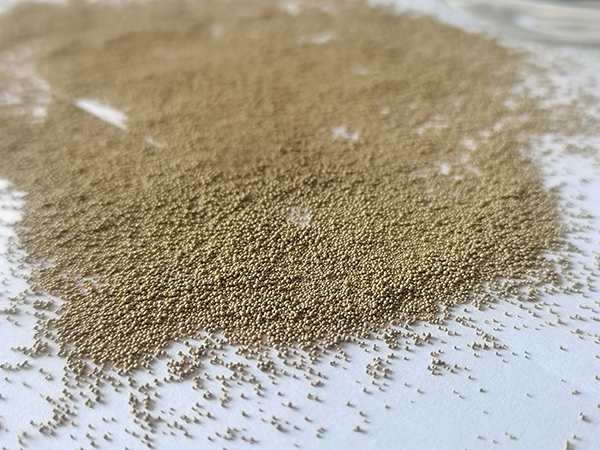Exploring Ceramic Foundry Sand A Key Material in Modern Casting Processes
In the realm of manufacturing, especially in the foundry industry, the choice of materials used in the casting process plays a crucial role in determining the quality and performance of the final product. One of the emerging materials gaining significant attention is ceramic foundry sand. This innovative material presents numerous advantages over traditional foundry sands, making it an exciting development for engineers and manufacturers alike.
Understanding Ceramic Foundry Sand
Ceramic foundry sand, composed primarily of high-purity aluminosilicate ceramics, is engineered to meet the demanding requirements of modern casting applications. Unlike conventional silica sand, ceramic foundry sand is characterized by its uniform grain shape, high strength, and thermal stability. These properties translate into superior casting performance, particularly in precision and complex molds.
The production of ceramic foundry sand involves advanced processing techniques, which ensure consistent particle size distribution and enhanced mechanical properties. This process not only improves the sand's flowability but also minimizes defects in castings, leading to higher yields and reduced material waste.
Advantages of Ceramic Foundry Sand
1. Enhanced Strength and Durability One of the primary benefits of ceramic foundry sand is its exceptional strength. The fine, uniform particles contribute to a robust mold structure, effectively resisting deformation during the pouring of molten metal. This property is particularly vital for intricate designs where dimensional accuracy is paramount.
2. Improved Thermal Conductivity Ceramic foundry sand exhibits superior thermal conductivity compared to traditional sands. This characteristic allows for better heat dissipation during the casting process, leading to improved surface finishes and reduced porosity in the final product. As a result, manufacturers can achieve tighter tolerances and higher-quality castings.
ceramic foundry sand

3. Eco-Friendly Characteristics With the increasing emphasis on sustainability in manufacturing, ceramic foundry sand offers an environmentally friendly alternative to conventional sands. It can be reused multiple times without significant degradation, reducing the overall environmental footprint associated with sand disposal and land reclamation. Additionally, the use of ceramic materials minimizes the generation of harmful dust generated by traditional silica sands, improving workplace safety.
4. Resistance to Heat and Thermal Shock Ceramic foundry sand exhibits remarkable resistance to high temperatures and thermal shock. This property makes it ideal for casting high-temperature alloys and other challenging materials that require precise control over mold conditions. The ability to withstand extreme thermal fluctuations without failure enhances the longevity of molds and improves overall production efficiency.
5. Reduced Casting Defects The consistency in particle shape and size offered by ceramic foundry sand leads to fewer casting defects, such as shrinkage and misalignment. By mitigating these issues, manufacturers can reduce rework and scrap rates, saving both time and resources while improving the overall profitability of operations.
Applications of Ceramic Foundry Sand
Ceramic foundry sand is suitable for a variety of casting applications across different industries, including automotive, aerospace, and heavy machinery. Its versatility allows it to be used in processes such as investment casting, sand casting, and precision casting. Moreover, its superior properties make it ideal for producing critical components where reliability and performance are crucial.
A growing trend in the electronics and medical devices sectors is the use of ceramic foundry sand for manufacturing intricate parts that demand high precision and minimal defects. As technology evolves, manufacturers increasingly require materials that not only meet stringent performance standards but also contribute to sustainable practices. Ceramic foundry sand aligns perfectly with these needs.
Conclusion
Ceramic foundry sand represents a significant advancement in the casting industry, offering a range of benefits that traditional sands simply cannot match. Its enhanced strength, thermal stability, and eco-friendly properties make it an attractive option for manufacturers aiming to improve quality and efficiency while minimizing their environmental impact. As the foundry industry continues to evolve, ceramic foundry sand is poised to play an integral role in shaping the future of casting processes, delivering innovative solutions to meet today's demanding manufacturing challenges.
Post time:Верас . 30, 2024 02:25
Next:Recyklace písku používaného ve slévárenství pro udržitelnější budoucnost
